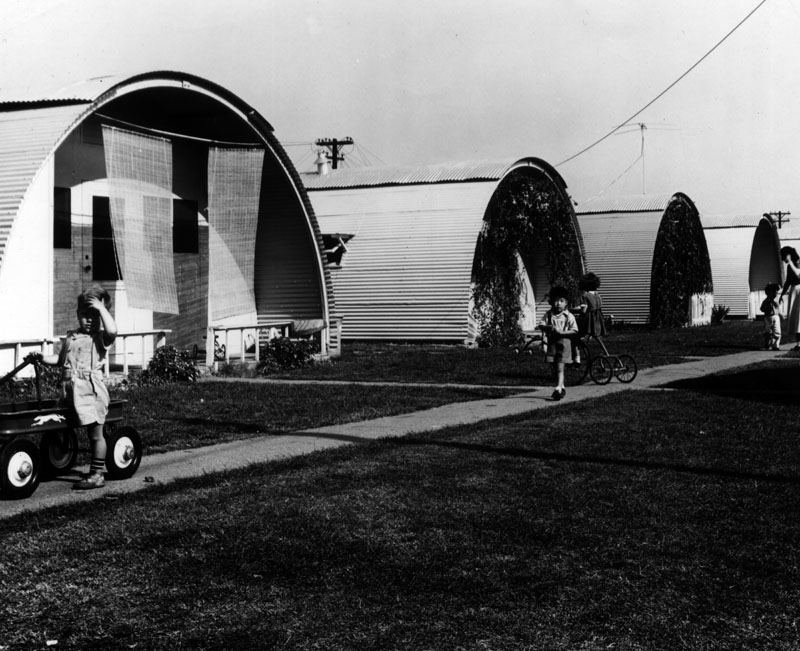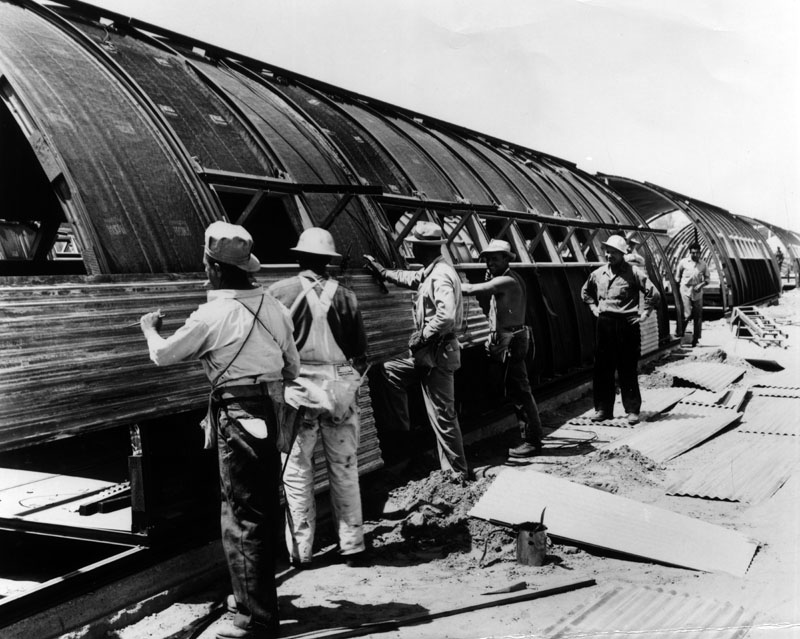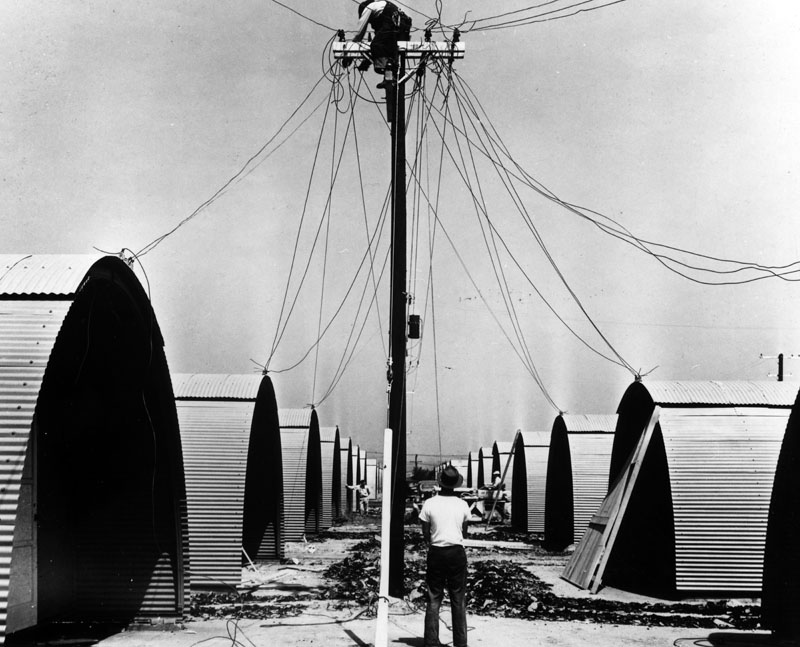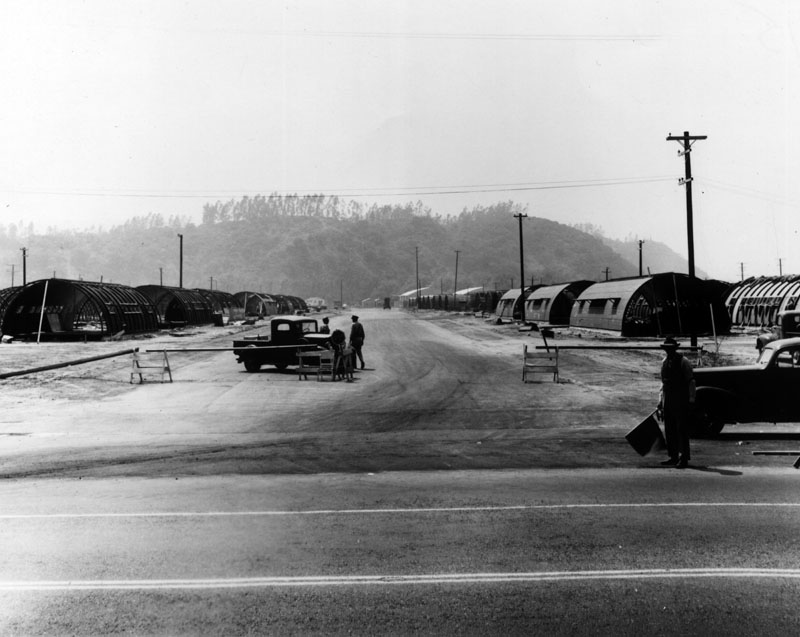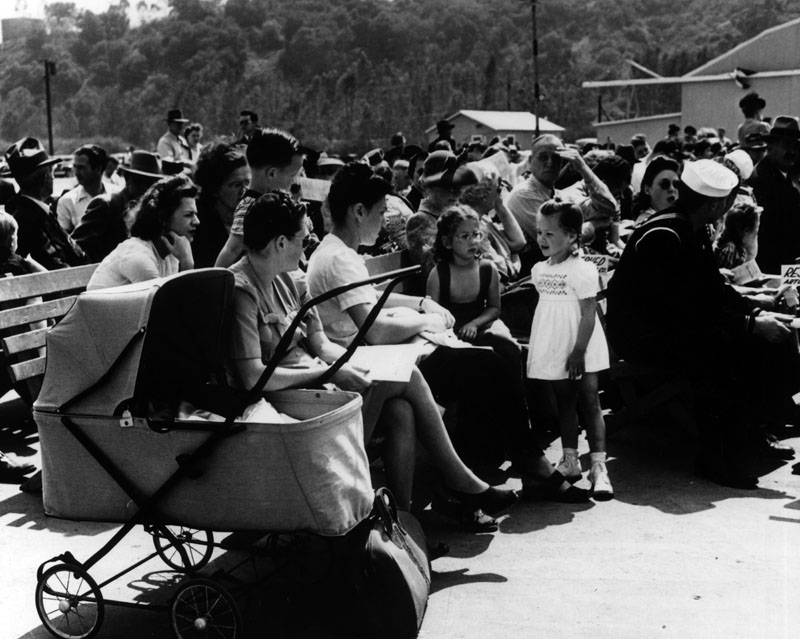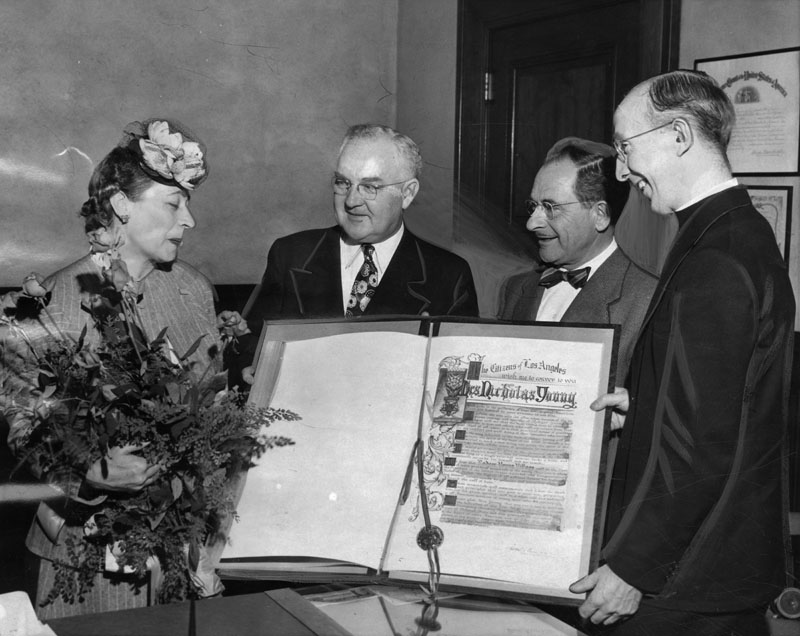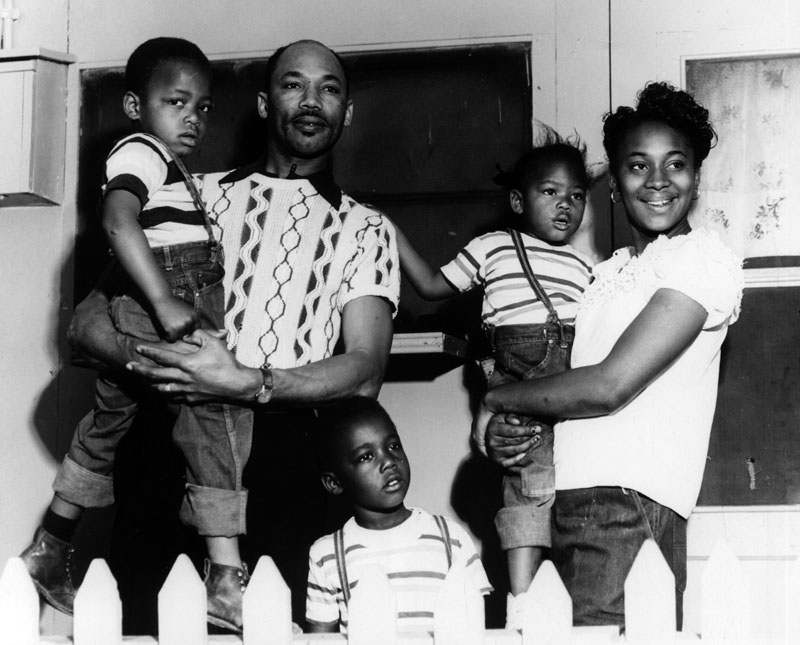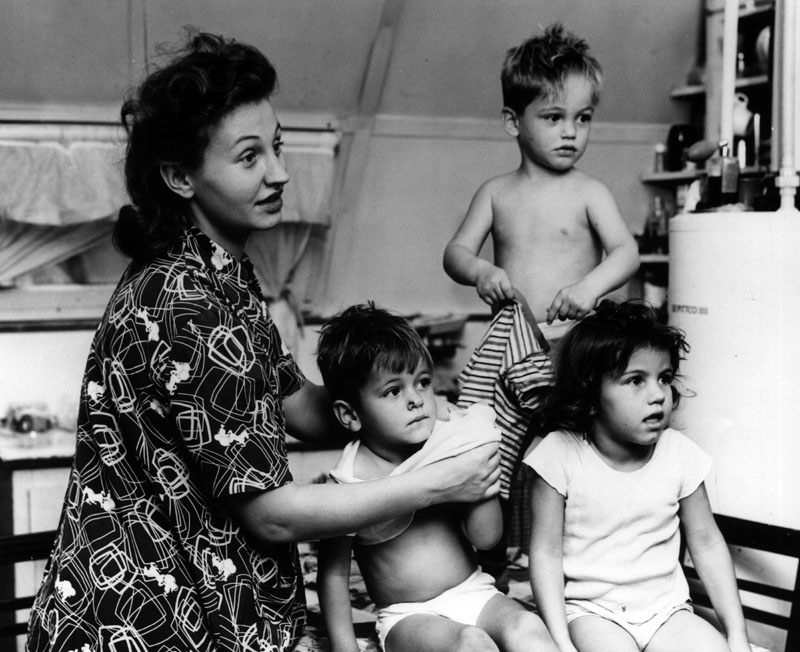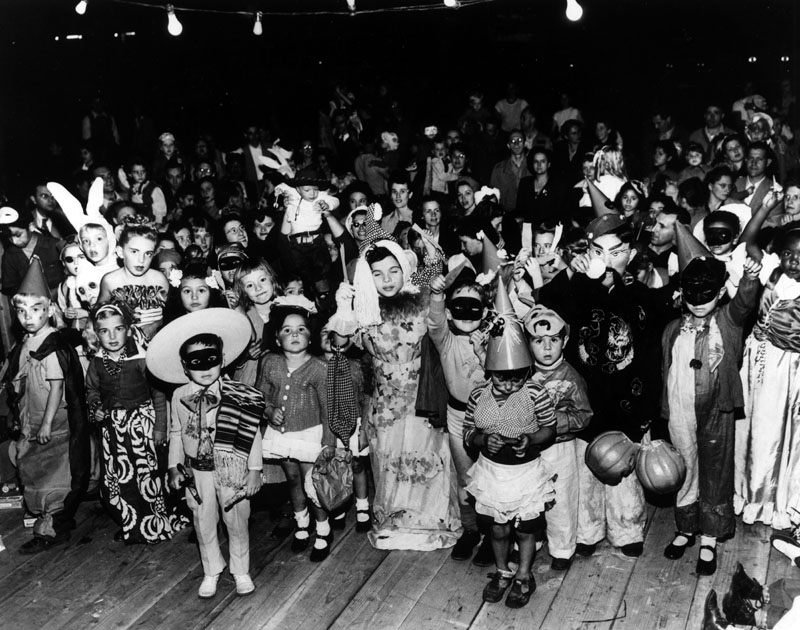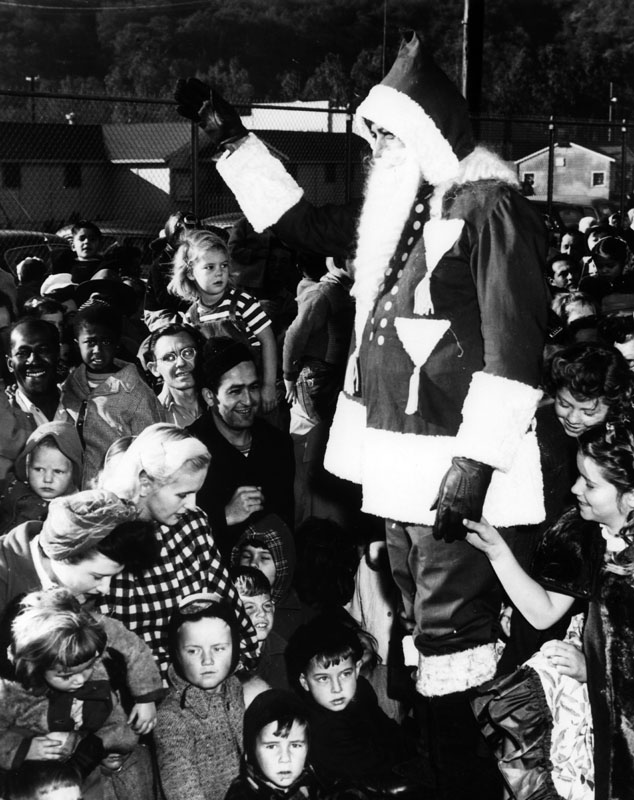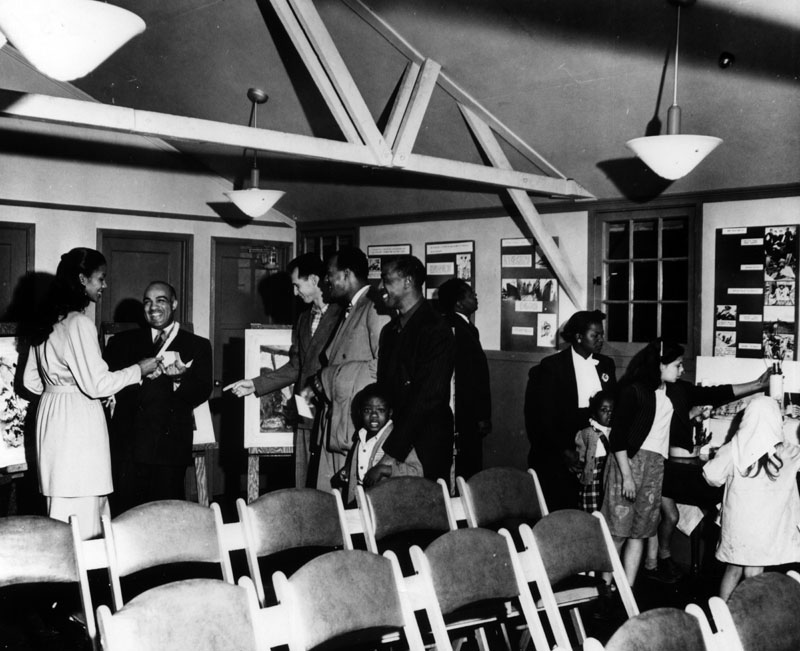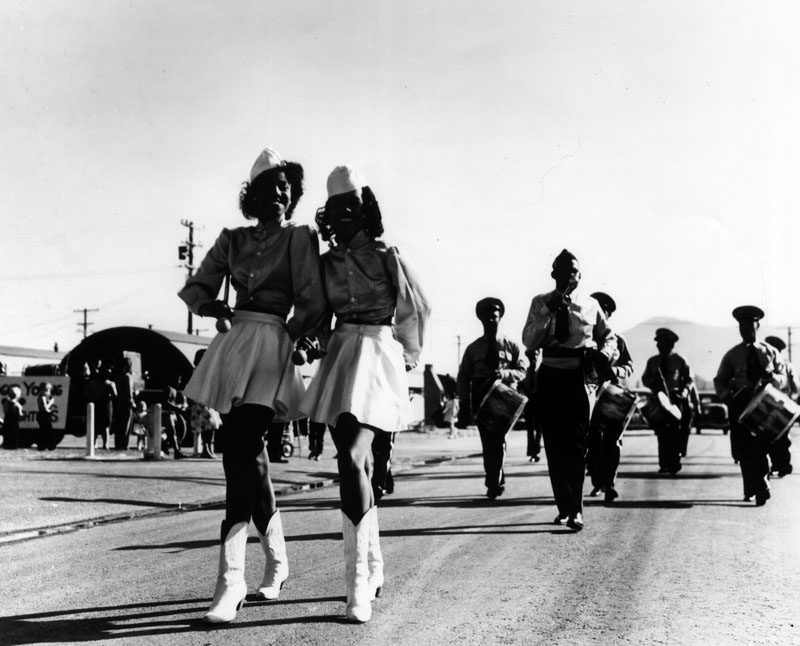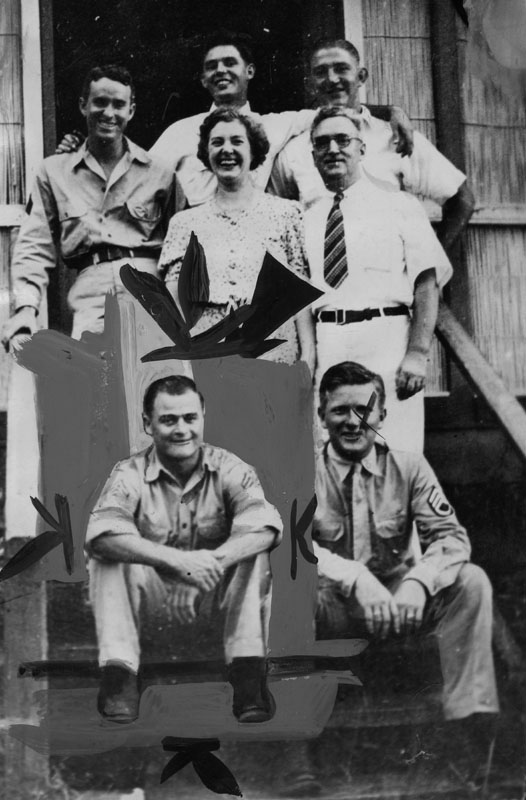During WWII, thousands of men and women left Southern California to serve their country wherever they were needed. Thousands more men and women came to Southern California to work in factories supporting the war effort. As raw materials were needed for weapons, aircraft, and other related goods, construction of new housing ceased during the war. This created a housing shortage for veterans returning to the area after the end of WWII. This housing shortage spurred a housing boom, but veterans needed housing immediately. The Los Angeles City Housing Authority responded by building housing projects that offered affordable yet temporary housing for veterans and their families.
Rodger Young Village (also referred to as “RYV”) was one such public housing project. Built in Griffith Park and dedicated on April 27, 1946, RYV was named for Rodger Wilton Young, an infantryman in the U.S. Army killed during World War II. Rodger Young Village consisted of 750 Quonset huts, with most residents being young couples with children. RYV boasted a market, drug store, and theater plus delivery service for milk, diapers, and baked goods. Telephones were located outside throughout the village; a ringing phone would be answered by the nearest bystander who would then fetch (or get a kid to fetch) the intended recipient of the call. Churches came to conduct services in the theater (with the Catholics bringing their own kneelers), the Fuller Brush man made rounds throughout the compound, RYV had its own firefighters. Perched inside a park, it offered children plenty of space to play and explore.
Open to veterans of all races and branches of the military, Rodger Young Village was one of the most diverse communities in Southern California at the time. Adults and children befriended their neighbors with little regard to their ethnic background, educational levels, or personal beliefs. (One exception was the couple of Sidney and Libby Burke. There were evicted as it was determined that Sidney did not hold the proper veteran status but also because Libby had distributed supposedly communist literature.) Such acceptance of diversity helped end the practice of racial segregation in many local restaurants. (RYV residents often went to nearby eateries to dine with their neighbors. If a restaurant refused to serve someone in their party, the entire group would leave and often never return. Restaurants, faced with losing business, dropped discriminatory policies.)
As veterans bought homes or found housing elsewhere, the Rodger Young Village began to lose residents. RYV was demolished in the early 1950s. The parking lot for the Los Angeles Zoo and part of the Autry Museum now occupy the site where returning WWII vets and their families lived while waiting to move into their dream home. No physical trace of this housing project exists on the grounds today, but the photo archives of the Los Angeles Public Library can help you see how life was in this small town inside a big city.
With housing scarce and veterans returning en masse to the Los Angeles area, construction (conducted by William Radkovich Company and Zoss Construction Company) of Rodger Young Village was made a top priority by the Housing Authority.
The building of a Quonset hut is seen here.
Housing Authority Collection, photographed by Edwin Eichelberger on April 22, 1946.
While no huts had individual telephone service, all homes in Rodger Young Village had electricity. Here we see an electrician connecting wires to the Quonset hut homes.
Housing Authority Collection, photographed by Louis Clyde Stoumen (no date given).
The main entrance for Rodger Young Village was on Riverside Drive, with the Santa Monica Mountains providing a dramatic backdrop for the housing project.
Housing Authority Collection, photographed by Edwin Eichelberger on April 22, 1946.
An aerial view of Rodger Young Village shows its size and layout.
Shades of L.A.: Mexican American Community, photo taken by
White’s Studio circa 1940.
The dedication ceremonies for Rodger Young Village were held on April 27, 1946. Here we see a map showing how to get to the festivities.
Security Pacific National Bank Collection (photographer and
date of photograph unknown).
Many new and prospective residents attended the dedication festivities.
Housing Authority Collection, photographed by Louis Clyde Stoumen
on April 26, 1946.
Mrs. Nicholas Young, the mother of Rodger Young (the war hero for whom the housing project was named) attended the Village’s dedication ceremony as well as then-Mayor Fletcher Bowron.
Herald-Examiner Collection, photographed on April 26, 1946.
Each family would occupy one-half (front or back) of a Quonset hut, with two bedrooms, a bathroom, and a kitchen in their living space. Single veterans or childless couples would share a Quonset hut with each having their own bedroom but sharing the rest of the hut.
A family lounges in a model unit of the newly-built Quonset huts to see if it meets their needs.
Herald-Examiner Collection, photographed by Howard Ballew on April 26, 1946.
A model unit also showcases a child’s bedroom in a housing unit in Rodger Young Village.
Housing Authority Collection, photographed by Otto Rothschild on February 21, 1950.
While RYV was designed as temporary housing, residents took pride in their surroundings, planting gardens to add a homey touch.
Housing Authority Collection, photographed by Leonard Nadel on July 19, 1950.
John Barnes and his family pose outside their home (Unit 606) in Rodger Young Village.
Housing Authority Collection, photographed by Leonard Nadel on February 4, 1952.
Mrs. Lourdes Benigno and her children gather by the garden at their home (Unit 1147) in Rodger Young Village.
Housing Authority Collection, photographed by Leonard Nadel on February 4, 1952.
Mrs. John Breslin, a German war bride, helps her children dress for the day in their home at Unit 1279.
Housing Authority Collection, photographed by Leonard Nadel in 1952.
As most residents of Rodger Young Village were young families, children were everywhere – playing by their homes, in the park, at the zoo, and at events organized for them. Here we see kids playing outside their homes, having fun and making friends in their temporary neighborhood.
Housing Authority Collection, photographed by Leonard Nadel on November 16, 1951.
Children always enjoy dressing up for Halloween, and the kids at Rodger Young Village were no different.
Housing Authority Collection, photographed in October of 1947
(photographer unknown).
Santa Claus knew there were plenty of children in RYV, so he flew (via helicopter!) to visit them and their parents.
Housing Authority Collection, photographed by Louis Clyde Stoumen
on December 21, 1948.
Adults also had plenty of activities to attend at Rodger Young Village. Here, Bette Davis confers with Rodger Young’s mother during a luncheon at RYV.
Security Pacific National Bank Collection, photographed by
Floyd McCarty (date unknown).
People mingle and look at exhibits during a Negro Week program held in RYV.
Housing Authority Collection, photographed by Louis Clyde Stoumen (date unknown).
Negro Week (also referred to as Negro History Week) at Rodger Young Village also included a firefighters’ parade that featured a marching band.
Housing Authority Collection, photographed by Louis Clyde Stoumen (date unknown).
The arrow in this photo points to Rodger Wilton Young, the war hero for whom Rodger Young Village was named. This is the last photo taken of him before he died on July 31, 1943, in the Solomon Islands. He was awarded the Medal of Honor posthumously.
Herald-Examiner Collection, photograph dated 1946 but
taken in 1943 or earlier (photographer unknown).

